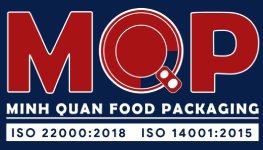
Packaging materials used in food industry comes in a variety of material, shapes and colours that serve different functions in context to preserving the properties of the food item that they carry inside. Since food often falls in the impulse buying category, the core purpose of packaging is presentation, preservation, and safety of the food.
Deciding the appropriate material for packaging is therefore a product of what you seek to accomplish from it. This purpose could vary from shielding the food against moisture, temperature, oxygen, light, and biological micro organisms.
Conventional packaging materials used in the food industry are metal, paper, glass and plastics.
Metals
Varied shapes of metal-based food packaging are available in the market, such as enclosures, cans, containers, tubes, films and caps. Cans can be aluminium or steel of the kind mostly used for wet/liquid food and beverages. These days, progressive manufacturers use recyclable material, layered with organic material to avoid contact between the food and metal. Metal choice is dependent on:
- Strength and rigidity
- Blocking gas and moisture
- Pressure resilient
- Temperature resistant / tolerant
- Corrosion resistance thru coatings
- Can be sterilised
- Can be right away decorated/labelled
Along with these functional features, a packaging design agency must also come up with attractive design features for the pack to make it a compelling pull factor for the customer.
Paper
Paper is one of the oldest packaging materials in use since the 17th century. Paper/paperboard is typically used for dry food or wet-fatty foods. Popularly used material is corrugated boxes, paper plates, milk/folding cartons, tubes, sacks, labels, cups, bags, leaflets and wrapping paper. Features that make paper packaging useful:
- Paper tears effortlessly along the fibres
- Folding is easiest from end to end fibres
- Fold durability is highest across fibres
- Stiffness level is good (cardboard)
Also, paper can be laminated to improve additional strength and barrier properties. It can be gloss or matt-finished. Other materials used are foils, plastics for laminating paperboard.
Glass
Glass is another popular packaging material in use for ages. The initial evidence of glass-making is found in 7000 B.C. Glassblowing of bottles was invented by the Romans in 50 B.C. in the modern-day Lebanon. To date, glass is one of the most dependable and least toxic materials for packaging food and drinks.
Products with high-value are still packaged in glass containers because of its plush look and aroma-preservation property. Glass comprises of soda, lime and silica – with other additional elements based on the requisite characteristics and is manufactured via melting these materials at very high temperature followed by container formation. Glass is preferred as a packaging material for the following reasons:
- Inertness
- Can be sterilised
- Barrier to moisture and gas
- Imperviousness
- Tamper-resistant
- Microwavable
- Pressure impervious to a certain degree
- Can be beaten into diverse shape
- Transparency makes the product inside clearly visible
- High recycle value
The versatility of glass to design features also makes it a popular choice with any packaging design agency.
Plastics
Plastic is another popular material used in food packaging. It finds widespread use in bottles, bowls, pots, trays, foils, cups, bags and pouches. Indeed 40% of all plastic manufactured is used in the packaging industry. The win-win factors that go in its favour are comparatively lower cost and its lightweight. Attributes that make it an apt choice for food packaging:
- Lightweight
- Can be moulded into unlimited shapes
- Chemical-resistance
- Can create rigid containers or flexible films
- Process ease
- Impact-resistant
- Directly decorated/labelled
- Heat-scalable
On the flip side, the health concerns associated with the use of this material has been in question from a long time.




